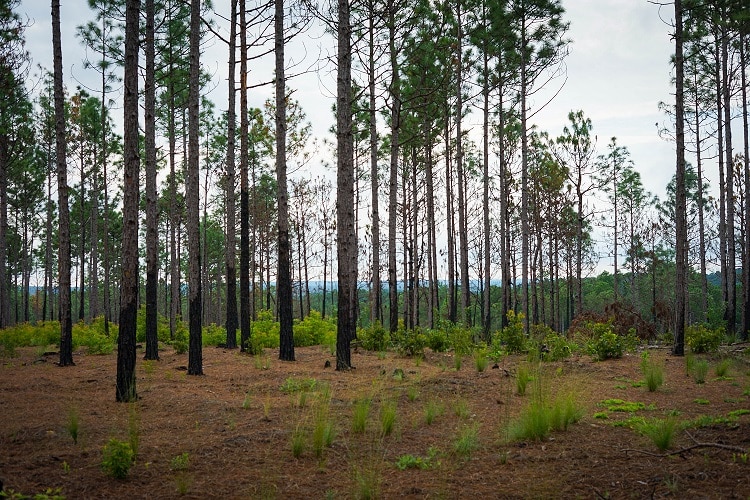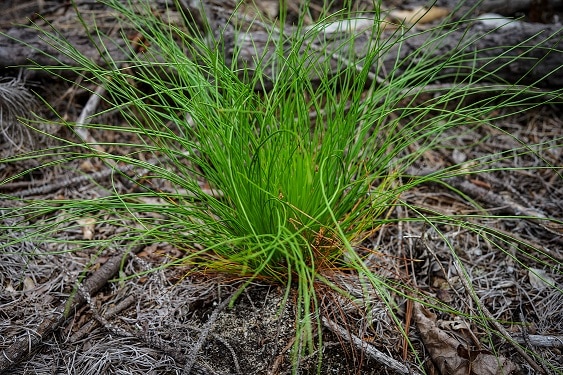
 Three Rivers Land Trust (TRLT) is excited to announce the conservation of a 200-acre property located in Montgomery County in partnership with the North Carolina Clean Water Management Trust Fund. The landowners worked with TRLT to place the parcel under a permanent conservation easement in August of 2020. This conservation easement protects the property permanently from subdivision and development, ensures that the hardwood forest buffer remains intact, and the uplands remain as a working longleaf pine forest.
Three Rivers Land Trust (TRLT) is excited to announce the conservation of a 200-acre property located in Montgomery County in partnership with the North Carolina Clean Water Management Trust Fund. The landowners worked with TRLT to place the parcel under a permanent conservation easement in August of 2020. This conservation easement protects the property permanently from subdivision and development, ensures that the hardwood forest buffer remains intact, and the uplands remain as a working longleaf pine forest.
“We are excited that Ann and Tommie Rogers chose to work with TRLT to permanently conserve their property,” states Executive Director Travis Morehead. “This conserved property is located along Drowning Creek, a primary water supply for many Moore County residents. TRLT is committed to working with willing property owners to conserve tracts like this while they are still undeveloped.”
“Drowning Creek, is a high-quality watershed with several rare aquatic species found in the stream,” states Crystal Cockman, Director of Conservation. “By conserving this property, we are not only protecting important wildlife habitat in the increasingly-fragmented Sandhills region, but are also protecting the excellent water quality in the Drowning Creek watershed and the tributaries that flow through this property.” The North Carolina Clean Water Management Trust Fund provided funding for the riparian conservation easement on the Rogers property, and the Rogers donated an easement on the uplands.
 The area presents an unusual combination of Piedmont and Coastal Plain ecology. Northern pine snakes, nonvenomous snakes which are endemic to the region, are known to occur nearby. The Drowning Creek watershed also contains native hardwood trees, and rocky outcrops and mountain laurel can be found along it. Prescribed fire is a management tool used here, which enhances important longleaf pine forest habitat. The North Carolina Sandhills are one of the last holdouts of native longleaf pine in the country – nationwide, three percent of the area that was once longleaf pine forest remains. Longleaf pine forests provide key habitat for a variety of species that characterize the North Carolina landscape, many of which are endangered or threatened.
The area presents an unusual combination of Piedmont and Coastal Plain ecology. Northern pine snakes, nonvenomous snakes which are endemic to the region, are known to occur nearby. The Drowning Creek watershed also contains native hardwood trees, and rocky outcrops and mountain laurel can be found along it. Prescribed fire is a management tool used here, which enhances important longleaf pine forest habitat. The North Carolina Sandhills are one of the last holdouts of native longleaf pine in the country – nationwide, three percent of the area that was once longleaf pine forest remains. Longleaf pine forests provide key habitat for a variety of species that characterize the North Carolina landscape, many of which are endangered or threatened.
Forest, wetland and farmland conservation have been a focus of TRLT since our inception, having protected more than 40,000 acres, with over 15,000 acres of farmland conserved, and 283 miles of river and stream frontage conserved since 1995.
To learn more about how to protect your own property, or how to support Three Rivers Land Trust in our conservation mission, contact Crystal Cockman at 704-647-0302 or crystal@threeriverslandtrust.org
